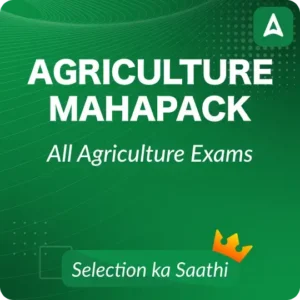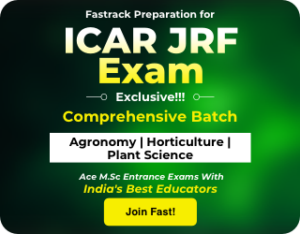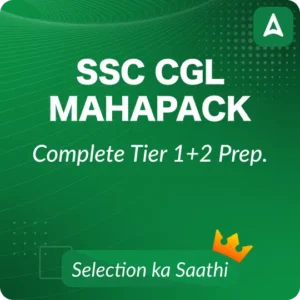The ICAR AIEEA PG Social Science Syllabus 2026 is structured to evaluate a candidate’s understanding and aptitude in agricultural social sciences at the postgraduate entrance level. Designed by the Indian Council of Agricultural Research (ICAR), the syllabus aligns with core concepts required for advanced studies in disciplines such as agricultural economics, extension, and rural sociology. Aspirants aiming to secure admission in ICAR-accredited universities must be well-acquainted with the ICAR AIEEA PG Social Science Syllabus and prepare strategically for the exam.
ICAR AIEEA PG Social Science Exam Pattern 2026
The ICAR AIEEA PG 2026 for Social Science follows a computer-based test format. The question paper consists of 120 multiple-choice questions carrying four marks each, totaling 480 marks. For every incorrect response, one mark is deducted as negative marking. The duration of the exam is 2 hours. Candidates must focus on accuracy and time management to maximize their scores.
| ICAR AIEEA PG Social Science Exam Pattern 2026 | |
| Exam Name | ICAR AIEEA PG Social Science |
| Conducting Body | Indian Council of Agricultural Research |
| Exam Mode | Online |
| Exam type | National exam |
| Total Number of Questions | 120 |
| Total Marks | 480 |
| Official website | www.icar.org.in |
ICAR AIEEA PG Social Science Syllabus 2026
A thorough grasp of the connections between agricultural practices, economics, and society is intended to be provided by the ICAR AIEEA PG Social Science Syllabus. It covers important topics that get students ready for advanced positions in the social sciences, rural development, and agricultural policy. The subtopics of the ICAR AIEEA PG Syllabus for Social Science have been broken down as follows:
Unit I
Importance of Agriculture in national economy; basic principles of crop production; cultivation of rice, wheat, chickpea, pigeon-pea, sugarcane, groundnut, tomato, and mango. Major soils of India, role of NPK, and their deficiency symptoms. Structure and function of cell organelles, mitosis and meiosis; Mendelian genetics; elementary knowledge of photosynthesis, respiration, and transpiration; structure and functions of carbohydrates, proteins, nucleic acids, enzymes, and vitamins. Major pests and diseases of rice, wheat, cotton, chickpea, sugarcane, and their management. Important rural development programmes in India; organisational set up of agricultural research, education, and extension in India; Elements of statistics. Measures of central tendency and dispersion, regression and correlation; concept of probability, sampling techniques, and tests of significance.
Unit II
Theory of consumer behaviour, theory of demand, elasticity of demand, indifference curve analysis, theory of firm, cost curves, theory of supply, price determination, market classification, concept of macroeconomics, money and banking, national income. Agricultural marketing—role, practice, institutions, problems and reforms, role of capital and credit in agriculture, crop insurance, credit institutions, cooperatives, capital formation in agriculture, agrarian reforms, globalization, WTO & its impact on Indian agriculture.
Unit III
Basic principles of farm management, concept of farming system and economics of farming systems, agricultural production economics-scope and analysis, factor-product relationship, marginal cost and marginal revenue, farm planning and budgeting, Agricultural finance: nature and scope. Time value of money, Compounding, and discounting. Agricultural credit: meaning, definition, need, classification. Credit analysis: 4R’s, 5C’s, and 7 P’s of credit, repayment plans. History of financing agriculture in India. Commercial banks, nationalization of commercial banks. Lead bank scheme, regional rural banks, and scale of finance. Higher financing agencies, RBI, NABARD, AFC, Asian Development Bank, World Bank, role of capital and credit in agriculture; credit institutions, co-operatives, and agrarian reforms in India.
Unit IV
Extension Education- concept, meaning, principles, philosophy, scope, and importance; Extension programme planning and evaluation- steps and principles, models of organizing agricultural extension; historical development of extension in USA, Japan, and India. Rural development, meaning, importance, and problems; Rural development programmes in India- Pre-independence era to recent ones; Extension teaching methods, definition and concept of sociology, differences between rural & urban communities, social stratification, social groups, social organization, and social change. Rural leadership, educational psychology- learning and teaching, role of personality in agricultural extension, Indian rural system- its characteristics, value system, cost and class, structure and customs; rural group organization and adult education.
Unit V
Communication, principles, concepts, process, elements, and barriers in teaching methods. Different kinds of communication methods and media, and AV aids/materials. Media mix, Campaign, Cyber extension- internet, cybercafé, Kisan Call Centers, teleconferencing, agriculture journalism, diffusion and adoption of innovations- adopter categories, capacity building of extension personnel and farmers- training to farmers, women, and rural youth.
| Also Check |
| ICAR AIEEA PG Horticulture Syllabus |
| ICAR AIEEA PG Plant Science Syllabus |
| ICAR AIEEA PG Agronomy Syllabus |
| ICAR AIEEA PG Previous Year Question Paper |




 MP Food Safety Officer Previous Year Que...
MP Food Safety Officer Previous Year Que...
 TPSC FSO Exam Date Out, Check Tentative ...
TPSC FSO Exam Date Out, Check Tentative ...
 MP FSO Syllabus 2025, Check Exam Pattern
MP FSO Syllabus 2025, Check Exam Pattern




 Adda247 Job portal has complete information about all Sarkari Jobs and Naukri Alerts, its latest recruitment notifications, from all state and national level jobs and their updates.
Adda247 Job portal has complete information about all Sarkari Jobs and Naukri Alerts, its latest recruitment notifications, from all state and national level jobs and their updates.



